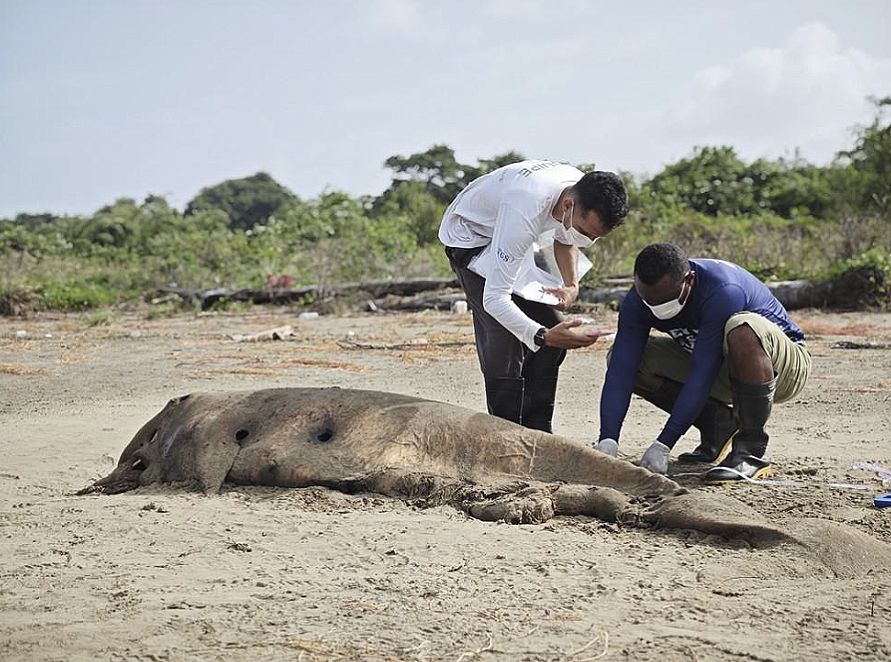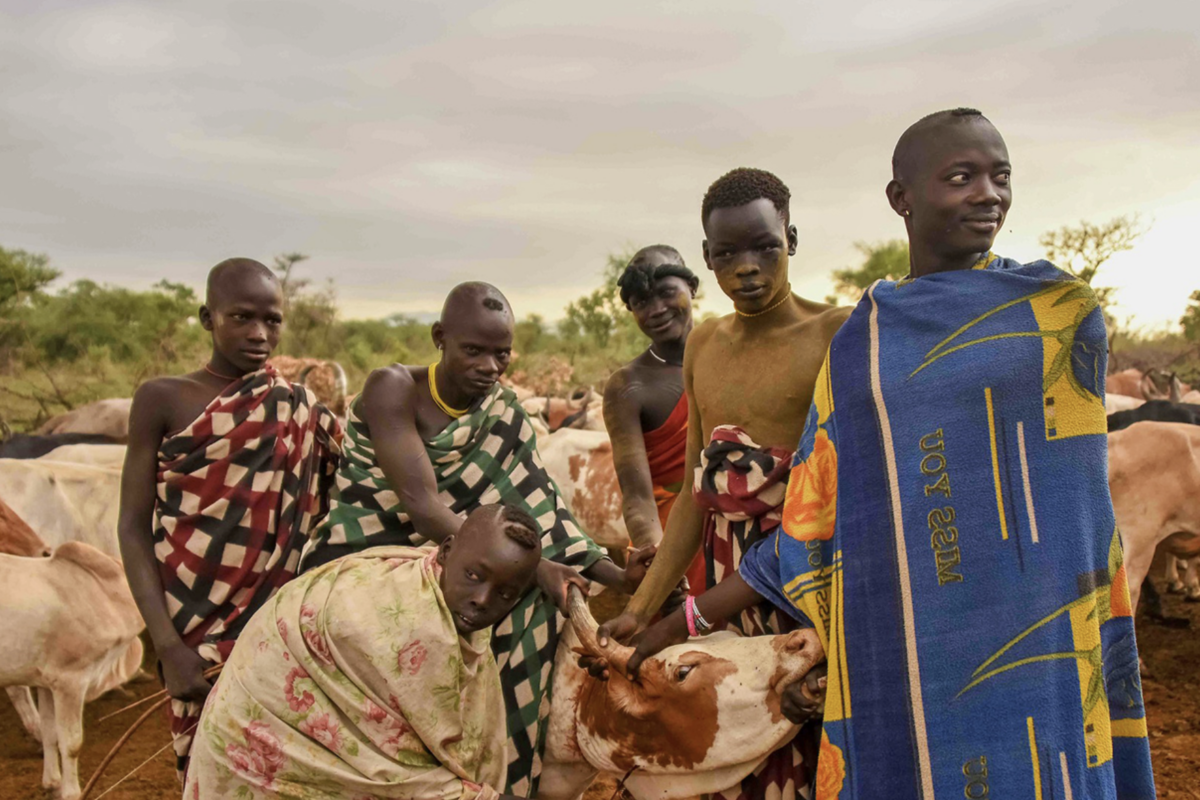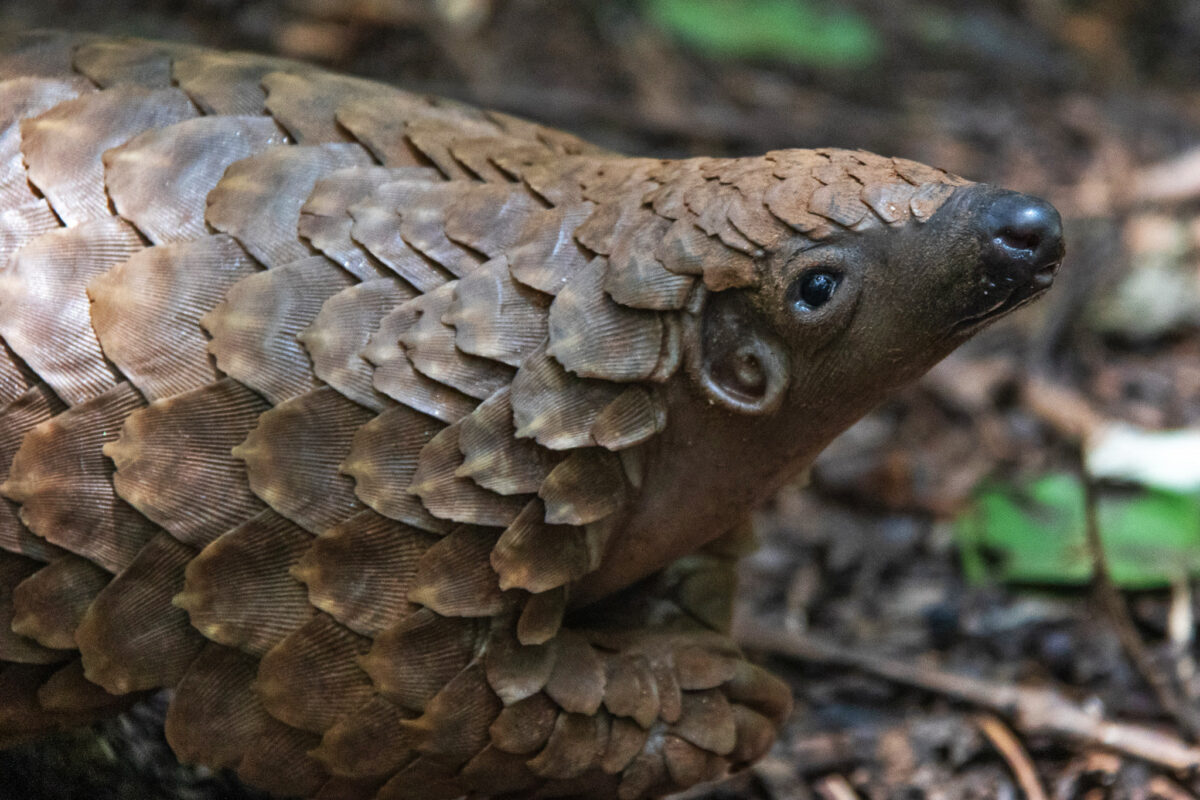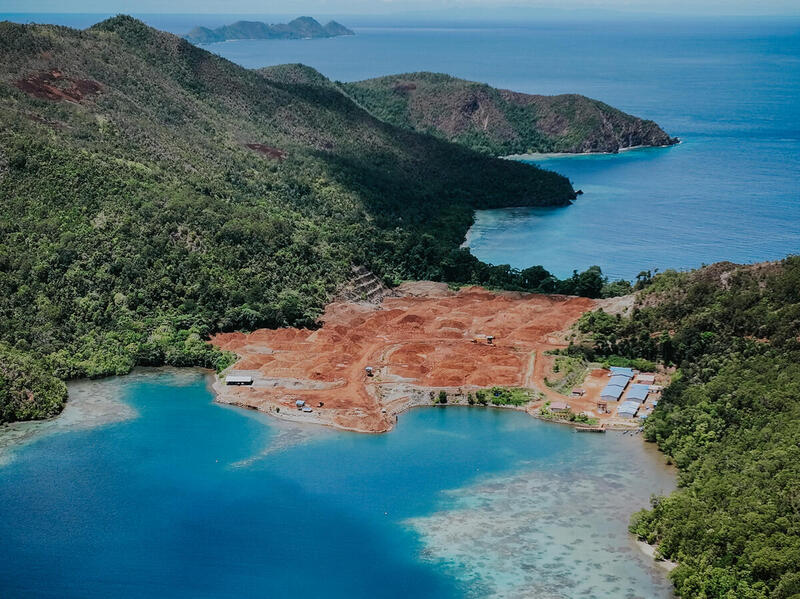- As oil companies push for drilling on the Amazon coast, an underwater war silences the ocean’s most vocal creatures.
- Petrobras has been conducting surveys since 2013 using seismic airgun blasts that can destabilize marine ecosystems by interrupting essential communication in the marine food chain.
- Blasts fired every 10 seconds, reaching more than 230 decibels, disorient and kill cetaceans and other marine life that rely on sound.
- The Amazon region is emerging as a new oil frontier, driven by recent discoveries and political will to expand hydrocarbon exploration despite environmental and social risks in an area known for strong sea currents and diverse wildlife.
OIAPOQUE, Brazil — At the northernmost tip of Brazil, where the Amazon spills into the Atlantic, a fragile web of estuaries, mangroves, submerged reefs and open sea is showing signs of distress. Here, where biodiversity has long flourished, something is shifting. The seismic airguns used by the oil industry to locate underwater oil reserves are disrupting marine life. The appearance of rare fish and stranded marine mammals is evidence that a silent, serious transformation is underway.
Julio Garcia, a fisherman for 45 years and president of a fishing colony, knows these waters intimately. It is here, in the municipality of Oiapoque, where the Amazon says farewell to dry land, that he has spent his life fishing, attuned to every shift in the wind and every lull in the tides.
But something has changed. “The sea is sick,” Garcia says. And with it, so, too, is the way of life for riverside and Indigenous communities that rely on artisanal fishing for survival. Dolphins, porpoises, migratory whales, fish, mollusks, crustaceans and corals — many still unknown by scientists — share this embattled territory where nature, culture and subsistence are deeply intertwined. The fish caught in these silty waters supply local markets, urban centers like Macapá and even distant parts of the country. Yet this ecosystem, a living bridge between biomes, cultures and livelihoods, now faces mounting risk.
The threat comes from multiple fronts, but none more contentious than oil exploration. Petrobras began 3D seismic surveys close to the Amazon River coast in 2013 after acquiring exploratory blocks. By 2015, the company had completed data acquisition and processing. In 2017, Brazil’s environmental agency, IBAMA, denied drilling permits, citing shortcomings in the environmental impact assessment. Petrobras reapplied in 2023, targeting a well named Morpho (FZA-M-59), but the request was again denied over environmental concerns tied to the sensitive Amazon Reef System. In 2024, IBAMA approved Petrobras’ emergency response plan, allowing the licensing process to advance. By mid-2025, the company is still awaiting final authorization to drill.

Meanwhile, local populations are noticing the changes: smaller fish, longer dry seasons and the disappearance of once-common species. The lack of updated marine fauna data and weak enforcement only worsen the situation as warning signs arise. The Amazon River’s Mouth, an open-air natural laboratory, is now at the center of a struggle between conservation, traditional knowledge and economic development.
The lack of specific studies creates data gaps that make accurate diagnoses difficult. “Environmental ignorance” becomes a convenient justification for advancing oil operations in one of the most sensitive regions of the Brazilian coast. Monitoring conducted by the Amapá State Institute for Scientific and Technological Research (IEPA), in partnership with the Amapá Federal Institute, through the Cetacean Characterization and Monitoring Project (PCMC), with the support of students and veterinary technicians, reveals a growing number of stranded marine animals, both dead and alive. These animals often show signs of escalating environmental stress: internal injuries, malnutrition and entanglement in fishing nets are among the most common findings.
But there’s an even less visible, yet equally destructive force at play: sound.
Underwater acoustic warfare
Airgun blasts, fired every 10 seconds during seismic surveys, are central to oil exploration. These sonic storms transform the marine environment into an underwater war zone, altering behavior, disorienting animals and threatening the local ecological balance. Even before the first drop of oil is extracted, noise pollution is already imposing a heavy toll on one of the world’s most biodiverse marine ecosystems. At the mouth of the Amazon, marine life already suffers the effects of this invisible impact. Petrobras conducts geophysical surveys, including seismic mapping, to identify subsurface oil-bearing structures.
According to Michel André, a leading bioacoustic engineer and director at the Polytechnic University of Catalonia, underwater noise pollution is the oil industry’s first major impact on the oceans. “Sound is the primary source of impact on the ocean today,” André says. In an environment where most organisms rely on hearing to hunt, evade predators and reproduce, he warns that the uncontrolled increase in artificial noises can trigger a domino effect with irreversible consequences.
During seismic survey activities, Petrobras uses compressed air cannons that release sound waves every 10 seconds, reaching levels over 230 decibels — louder than a rocket launch. According to the U.S. National Oceanic and Atmospheric Administration (NOAA), cetaceans like dolphins and whales begin to suffer acoustic stress at 120 decibels, with severe hearing damage possible from 160 decibels onward. This means that the noise generated not only exceeds the tolerable limits for these species but can cause disorientation, permanent deafness and even death.
For animals that rely almost entirely on sound to navigate and communicate — such as Guiana dolphins (Sotalia guianensis), humpback whales (Megaptera novaeangliae), sperm whales (Physeter macrocephalus) and even certain fish species like croakers — the impacts of sound pollution represent a direct threat to survival. “It’s like trying to have a conversation during a fireworks war,” André says. “If an animal loses its hearing, it’s doomed. And worst of all: We won’t even notice that it’s dead.” The Amazon River Mouth, part of what is known as the Blue Amazon, is home to species like the West Indian manatee (Trichechus manatus), the Guiana dolphin and various turtles and whales, for which sound communication is vital. “When sound is masked or destroyed, it’s not just one animal that suffers. The entire food chain breaks,” André says.
Despite the seriousness of the problem, acoustic monitoring remains neglected. André points out that, although AI-based technologies already allow the detection of sensitive species and the adaptation of human activities in real time, few projects adopt them consistently. “The technology already exists. We can map soundscapes, identify at-risk species and even pause operations for a few minutes so animals can move away. But this requires proactive behavior from companies,” he says.
André cites a case from the 2000s: the construction of a wind farm on the German coast of the Baltic Sea, which generated intense underwater noise during turbine installation. Shortly afterward, dolphins were stranded in the area, leading to environmental protests and suspension of the works. Lacking scientific data to prove no connection between the project and the strandings, even though the area had a history of such occurrences, the project was halted for six months.
The case highlights the importance of preventive measures like acoustic monitoring and environmental data collection before starting offshore projects. André criticizes the absence of laws requiring noise mitigation but stresses that companies themselves should adopt preventive measures. “We can’t wait for conflicts to arise. Governments, scientists, companies and society need to come together. We’re all consumers; we’re all responsible.”
Local science on the frontline
Along the Amapá coast, an emergency effort is underway to document the early signs of this still poorly understood environmental impact. Veterinarian Luiz Fernando Sabioni, a member of the team at IEPA, takes part in biweekly patrols along the beaches of Goiabal and Calçoene. On these expeditions, the team searches for stranded marine animals. “We assess the strandings and, whenever possible, examine the tympanic bulla of the cetaceans to investigate possible lesions caused by sound, which could indicate impacts from seismic activities,” Sabioni says.
He points out the logistical challenges of these missions: “Reaching these animals quickly is difficult. Even when an animal is found in what we classify as Code 2 condition, it can degrade to Code 3 within just a few hours because of the vast distances.” Sabioni explains the classification system used for the animals: “Code 1 indicates a live animal. Code 2 refers to a dead animal that is still well-preserved. Code 3 means the body shows signs of decomposition, making it impossible to analyze the inner ear, which is essential for monitoring.”
The PCMC is an initiative designed to evaluate the effects of seismic activities on marine fauna, focusing primarily on the Pará-Maranhão Basin and the Amazon River Mouth region. This evaluation is a requirement imposed by Brazil’s environmental agency, IBAMA, for the environmental licensing of oil exploration projects along South America’s north coast, known as the Equatorial Margin.

Since the start of operations, various stranded marine animals have been found, including Guiana dolphins, manatees and green sea turtles (Chelonia mydas). Many of these animals were young — a concerning sign regarding the sustainability of local populations.
Preliminary analyses suggest that the seismic activities may be affecting the behavior and health of cetaceans, pushing them into less populated areas. “Cetaceans rely heavily on hearing for communication and navigation,” Sabioni says.
Monitoring takes place on three fronts — awareness campaigns, field patrols, and analysis — with the goal of understanding the patterns and causes of this disruption to marine life. Preliminary data already point to a troubling scenario: Between 2023 and 2025, the PCMC recorded 170 dead or weakened marine mammals and 907 sea turtles along the Amazon coast. More than 97% of the mammals and 67% of the turtles were found dead. Yet what raises the biggest alarm is the likely link between these deaths and human activities. While entanglement in fishing nets and natural predation are listed as immediate causes, the sound waves can disorient and even kill species that rely on echolocation, a natural sound-based navigation and communication system used by animals like dolphins and whales to “see” their surroundings, locate prey and communicate.
An increase in strandings during periods of seismic activity has been observed in many parts of the world. A study by the Federal University of Rio Grande do Norte analyzed 351 strandings over two decades, identifying 65 that occurred within a week after seismic operations. Of these, five showed pathological signs compatible with gas embolism syndrome, potentially linked to seismic exposure.

When analyzed alongside the rising pressure from the fishing industry and the looming prospect of oil exploration, these stranding records serve as a kind of thermometer measuring human impact on the ecosystem. The mounting pressures are clear: According to data collected by Instituto Serrapilheira, fishing effort has increased significantly in recent years, marine mammal and turtle strandings have become more frequent and seismic surveys are raising concerns among environmentalists and scientists about marine fauna disorientation.
“We’re talking about a blind gamble,” says Mariana Andrade, ocean campaign coordinator for Greenpeace Brazil, who has closely monitored the impacts and contradictions of this process. She highlighted the risk of conducting this type of activity in a region that remains largely unknown to science and is ecologically extremely sensitive. “The Basin of the Amazon River’s Mouth is a very special region in terms of biodiversity. It has a complex current dynamic, with many organisms attached to the seafloor and also large species like whales and dolphins,” she says.
Greenpeace has conducted two major expeditions to the area: The first, between 2016 and 2018, used submersibles to capture images of the seafloor and collect data on local ecosystems. The second, more recent mission, deployed GPS-equipped drifters to track ocean currents. The results were striking: “Some of these devices quickly reached Suriname, French Guiana and even Florida in the United States. This shows how connected this region is, and how a potential oil spill, for example, could have almost immediate transboundary impacts.”
Although it does not conduct its own studies on sound pollution, Greenpeace closely follows IBAMA’s recommendations and the scientific debates on the impacts of seismic activity. “This kind of study involves firing high-pressure air jets into the seabed to map the subsurface. It’s a very loud, constant sound that can directly affect animals dependent on echolocation, like whales and dolphins. But it can also confuse or disperse entire schools of fish,” Andrade says.
She stresses that the impacts are both environmental and economic. “Disoriented fish don’t follow their usual migration patterns. They move away from traditional fishing zones. This directly affects artisanal fishers, who already depend on a balanced environment to secure their livelihood.” Andrade says these shockwave effects aren’t confined to the local area: “The impacts can alter ecosystems stretching hundreds of kilometers, affecting migration routes, food chains and entire ways of life.” Oil exploration in such ecologically fragile areas, combined with overfishing and lack of enforcement, could trigger a silent ecological collapse.
Between ecology, geopolitics and collapse

While national attention focuses on the debate over oil exploration in the region, newly released and previously unpublished data reveal an equally troubling development: Between 2016 and 2024, apparent fishing effort increased by 14.1% within the Brazilian coast between the states of Amapá, Pará, Maranhão and Piauí. Experts argue that the intensification of fishing activity, often without control or adequate monitoring, threatens the very species that form the base of this traditional economy and exacerbates socioenvironmental risks in an already vulnerable territory.
Analysis of fishing effort, estimated in hours per square kilometer (h/km²), shows an uneven distribution but a clear trend of intensification in strategic areas, especially in a region that hosts unique formations composed mainly of carbonate structures, calcareous algae, rhodolith beds and sponge grounds. This ecological singularity makes the area even more sensitive. This zone, home to a unique reef system and numerous endemic species, faces a double threat: on one side, increased fishing pressure; on the other, the advance of seismic surveys and oil industry interests.
Data collected by researchers Marina Méga, Maria Napolitani and Iago Simões, all part of the quantitative ecology training program at the Serrapilheira Institute, show that the annual average fishing effort has increased steadily. In 2016, it was approximately 17.6 h/km²; by 2024, it had risen 14%, to 20.1 h/km². In the areas under the greatest pressure, the jump was even more alarming: 48%, from 184.7 to 273.1 h/km². This concentrated increase suggests that other zones may already be exhausted or that only a few areas still contain viable fish stocks — a classic sign that the system is nearing a fisheries collapse, when fishing more leads to catching ever less.
Artisanal fishing plays an essential role in the economy of the city of Oiapoque, at the mouth of the Amazon River, with direct impacts on food security and income for hundreds of families. The activity generates both direct and indirect employment and moves the local economy significantly. With an estimated annual GDP of 106 million reais ($19.4 million), the state’s fishing sector has an exploitable potential of up to 400,000 metric tons per year. This economic relevance makes the fishing trade especially vulnerable to the risks associated with oil exploration at the mouth of the Amazon.
But this impact is not just statistical: it is directly reflected in the daily lives of those who depend on fishing. Julio Garcia, an artisanal fisher in Oiapoque, reports that the activity is becoming increasingly difficult. “Fishing has been decreasing over the last few years. We’re facing serious conflict with industrial fishing companies that are squeezing out small fishermen,” he says.

He notes that the fish are smaller and scarcer. “The volume we used to catch before, we just don’t catch anymore. The fishing effort is huge. The industrial fleets reduced the mesh size of their nets, and they’re catching a lot of small fish,” he says. Among the most caught species are yellow croaker (Larimichthys polyactis), croaker, guriuba catfish, uritinga and other catfish species. But even these, Garcia says, are becoming hard to find. “They’re moving farther away from shore, maybe because of the pressure the sea is under,” he says.
Garcia is skeptical about the oil exploration in the region: “It might bring development for some, but for us fishermen, it won’t change much. Most of us here are illiterate. What jobs are we going to get at Petrobras?” he asks. Nevertheless, he acknowledges that dialogue with the company has started, albeit tentatively. “After a lot of pressure, they started coming to talk to us. Sometimes they inform us about what they’re doing, and some fishermen even provide support with their boats.”
The fear, however, remains: “If an accident happens, we have nowhere to run. We’re between French Guiana and Indigenous land. It’ll affect everyone: fishermen, the economy, all of Oiapoque.”

Promises and uncertainties
Petrobras says it is investing in new frontiers with environmental responsibility. According to the company, its interest in the Amazon coast is part of its strategy to meet global energy demand by tapping into promising reserves. In its institutional communications, Petrobras states that it “conducts its activities in compliance with current legislation,” fulfilling “all legal and environmental requirements,” and that the requested licensing includes “robust impact mitigation plans, including environmental emergency response structures and safeguards for sensitive areas.”
The company was contacted for this report, but declined an interview. In a written statement, Petrobras said it “maintains constant dialogue with regulatory agencies” and “remains committed to operational safety and environmental protection in all its activities.”
In May 2025, IBAMA approved the conceptual framework for Petrobras’ Oiled Wildlife Protection and Response Plan, allowing the company to proceed to the final stage of the licensing process: the simulation of a response to a possible oil spill. The NS-42 drilling rig, designated for this operation, is expected to arrive in the region by the end of June, following the completion of coral cleaning on its hull. However, the simulation’s execution depends on coordination between IBAMA technical teams and Petrobras to finalize the testing schedule.
Meanwhile, debates continue over the need for a comprehensive environmental study (known as AAAS) and over legislative proposals like the Special Environmental License, which aims to streamline licensing for strategic projects — sparking intense discussion among environmentalists, politicians and civil society.
The Amazon River Mouth is at its limit. The rising number of marine species strandings, the increasing difficulties faced by artisanal fishing and the effects of seismic surveys all point toward a rapidly expanding environmental imbalance, according to experts. Even in the face of concrete evidence of impact, oil exploration continues to advance into a region still largely unknown to science and lacking comprehensive environmental assessments.
This special report was supported by Amazônia Real as part of a collaborative project between Latin American journalists and scientists, led by Serrapilheira Institute, from Brazil, and the Latin American Center for Investigative Journalism (CLIP), aimed at exploring how biodiversity damage in the Amazon disrupts the continent’s various environmental services.
BANNER IMAGE: An alert sign: a stranded marine specimen documented by IEPA scientists along the Amapá coast. The case is part of ongoing efforts to monitor aquatic fauna. Image courtesy of IEPA.



